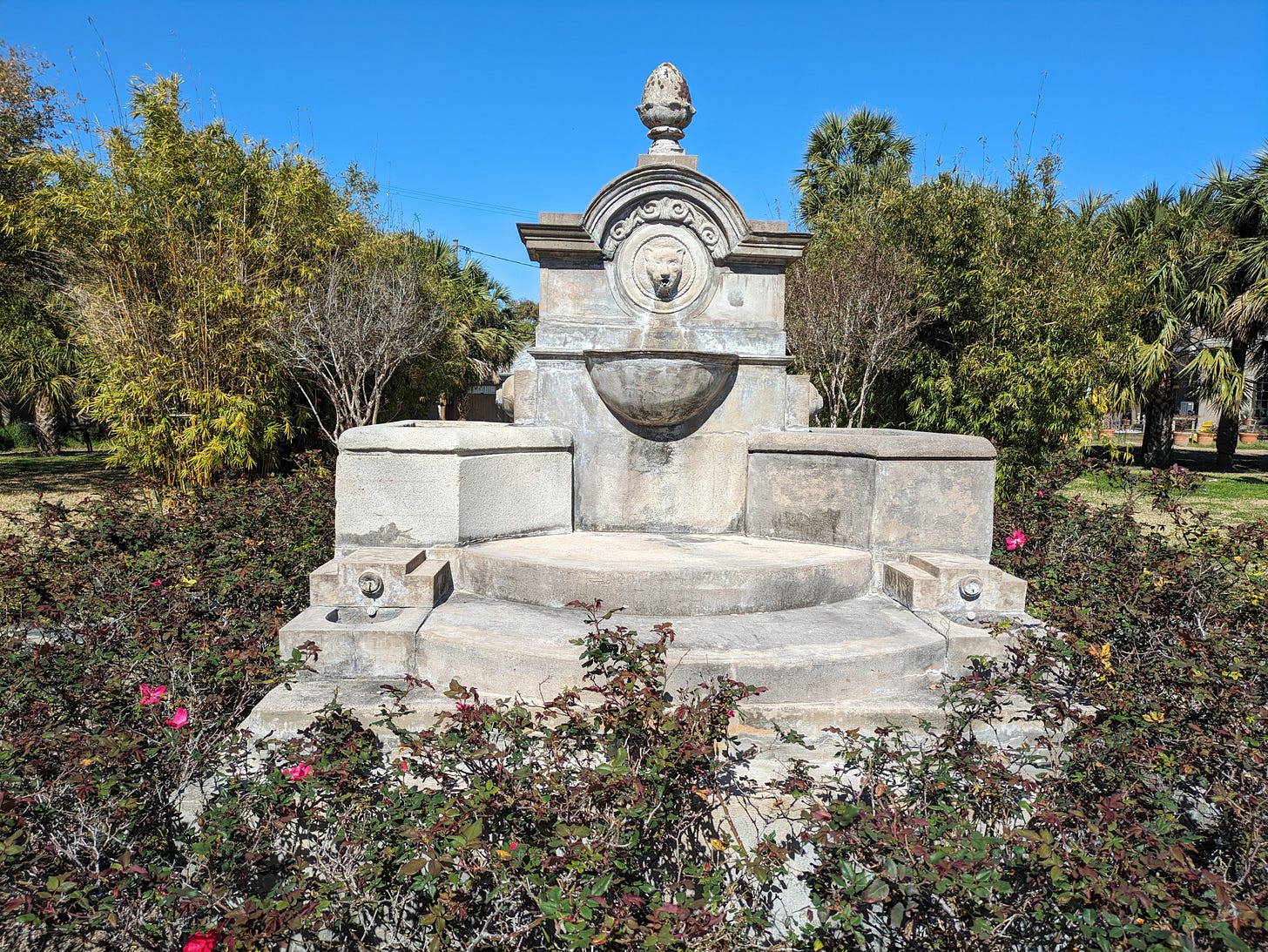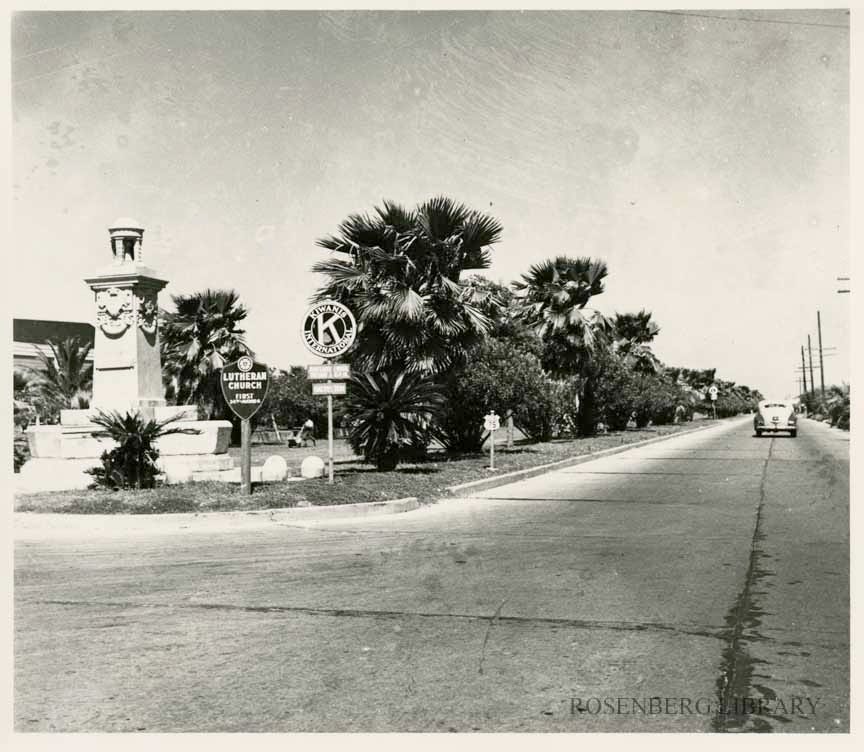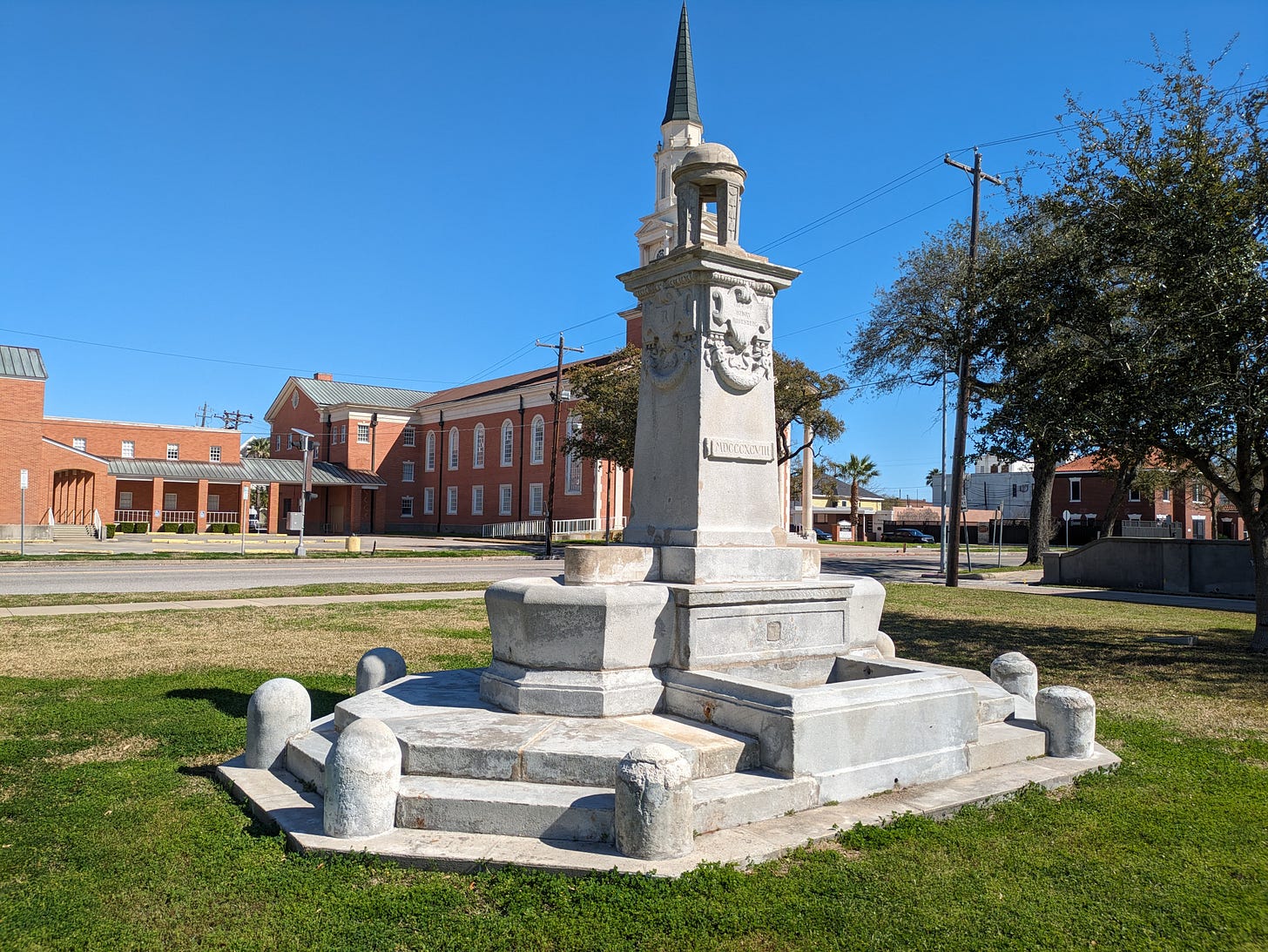Imagine: You are old and wealthy, and you have no heirs. How would you want your wealth to be spent after you’re gone?
Henry Rosenberg came to Galveston from Switzerland when he was 18 in 1843, died wealthy and childless in 1893, and felt indebted to Galveston. The city had welcomed him and gave him license to be creative and to flourish.
Each of Rosenberg’s major bequests – setting aside funds for Galveston’s magnificent public library, a Young Men's Christian Association building, Grace Episcopal Church, an orphans’ home, and a towering statue on Broadway commemorating Texas heroes – had a straightforward rationale and left a handsome dividend for residents.
But one of his bequests intrigues me. In his will, he set aside $30,000 – the equivalent of just over one million dollars today – to create “not less than 10 drinking fountains for man and beast in various portions of the city of Galveston.”

Why drinking fountains? Potable water in 19th-century Galveston was precious. Because wells on the island produced only brackish water, residents relied on cisterns and reservoirs to capture rainwater. During droughts, water had to be brought to the island on railcar from the mainland.
Rosenberg’s fountains were conditioned on the discovery of “an abundant supply of good drinking water within five years after my death.” By 1897, four years after his death, 30 artesian wells had been dug in present-day Santa Fe, Texas and were sending 6,000,000 gallons of freshwater per day through a cast-iron pipeline to the island.
But why would anyone spend a million bucks on drinking fountains? The answer goes some distance in explaining why living in Galveston makes me happier than I’d be elsewhere.
Rosenberg wanted his fountains to be beautiful.

Three years after he died, on August 18, 1896, The Galveston Daily News announced that the city had chosen locations for what it called the Rosenberg Memorial Fountains. Folks unfamiliar with Galveston can skip this next section, but it’s interesting to see where the original fountains stood.
Four of the city’s aldermen and four citizens chosen by Rosenberg’s executors decided to erect 17 fountains, at least one in each of the city’s twelve wards, in these locations:
Mechanic and 11th, in the center of the intersection
Post Office and 15th, in the center of the intersection
Block 320, courthouse square (adjacent Avenue G and 21st)
Strand and 20th, on the south side of the intersection
Avenue H and 24th, in the center of the intersection
Bath Avenue (25th) and Strand, on the south side of the intersection
27th between Church and Post Office, in the center of the street
Avenue H and 34th, in the center of the intersection
Block 340, cotton mill public square
Broadway and 40th, on the southwest corner on the sidewalk at the curb
Avenue P and 35th, in the center of the intersection
Avenue O between 26th and 27th, on the north sidewalk
Tremont Street between Q1/2 and R, on the west sidewalk adjoining Beach Hotel square
Avenue N1/2 and 19th, in the center of the intersection
Avenue M and 15th, in the center of the intersection
Block 310, Sherman Square (adjacent Avenue H and 12th)
Avenue K and 10th, in the center of the intersection
The fact that most of them were in the middle of streets indicates that the committee took Rosenberg’s direction about accommodating beasts to heart. In location as much as design, horses would be at least as important a consideration as humans. Most of the fountains also had smaller, lower basins for dogs. Good on you, Mr. Rosenberg.
The fountains were erected in 1898. Only eight of these originals have survived, and each of them has been moved from its original location. Three animals-only basins were added, apparently because the city had some Rosenberg dollars left after the 17 were built. One of these has survived and is the only Rosenberg “fountain” in its original location.

Even if the Great Storm of 1900 hadn’t destroyed them (and I don’t know if it destroyed any of them), Rosenberg’s fountains would become functionally obsolete soon after, when cars replaced horses. Today, only one of the fountains has running water, and the water isn’t potable.1

But all of the surviving fountains continue to fulfill Rosenberg’s second aim. They continue to be beautiful.

“A Genius With the Chisel”
One day after it announced where the fountains would be located, The News announced the sculptor who would design them: H. Massey Rhind, of New York. In its enthusiasm, The News reprinted in full a laudatory article from Munsey’s Magazine, “A Genius With the Chisel,” about the artist behind “some of the greatest masterpieces of sculpture in this country.”
The fountains would be made of Maine granite (“said to resemble white marble,” the newspaper reported), some with bronze embellishments.

Galveston’s remaining fountains remind me of Roman ruins on a human scale. They share that romance of objects that belong to a distant past, silent, surviving witnesses to lifeways and to people long vanished. That shroud of mystery is part of their beauty.
More than a century after they stopped being useful as sources of freshwater, Rosenberg’s fountains remain useful as beautiful objects. In its 19th-century heyday, Galveston had the wealth and the wisdom to take beauty seriously. Even in its drinking fountains.
Don’t tell anyone, but we’ve let our dogs drink from it.






Another good article to quench one's thirst for all things Galveston. PROSIT!